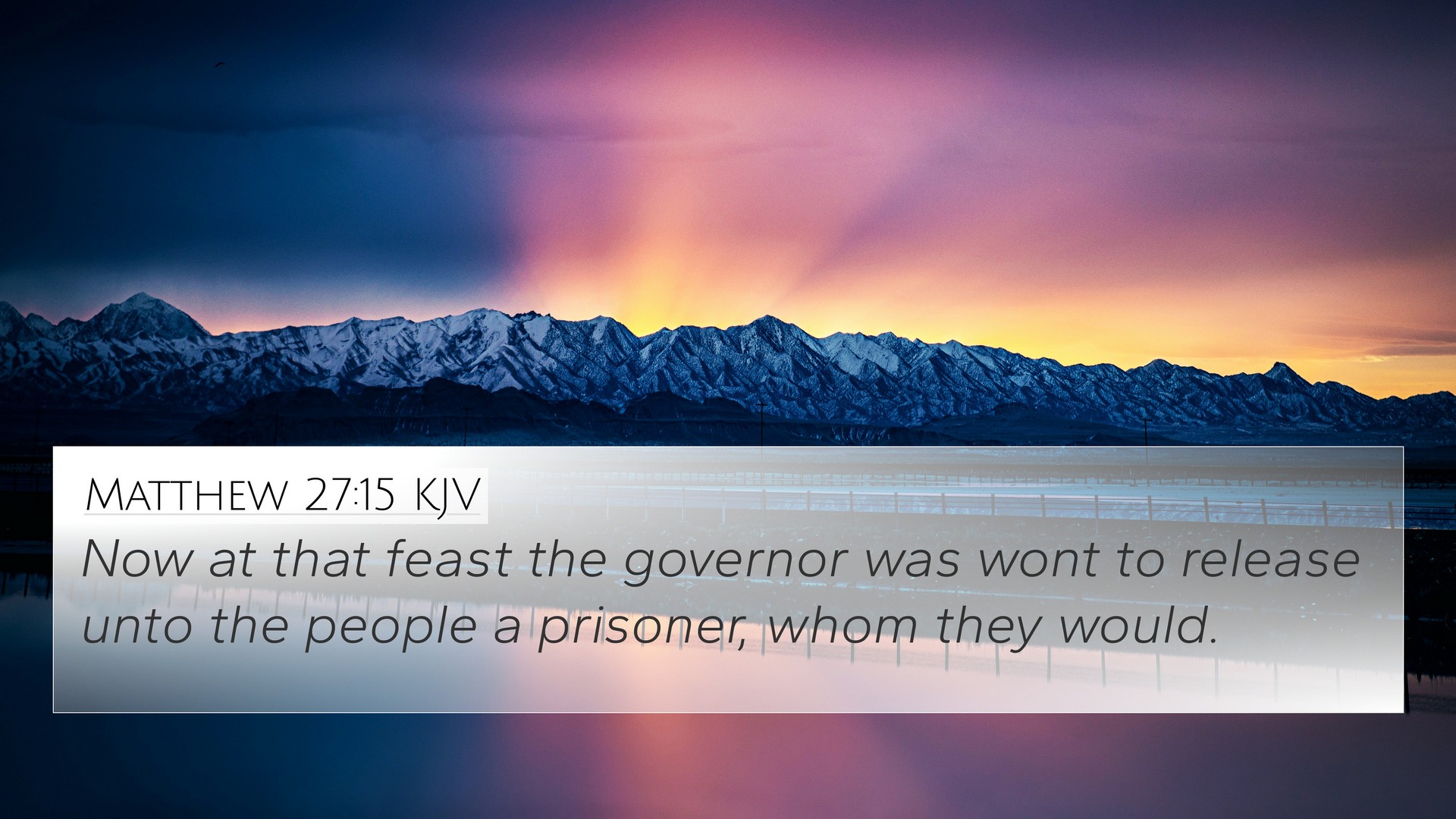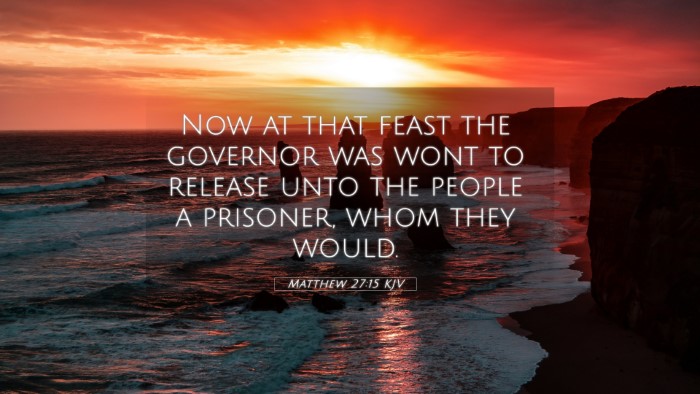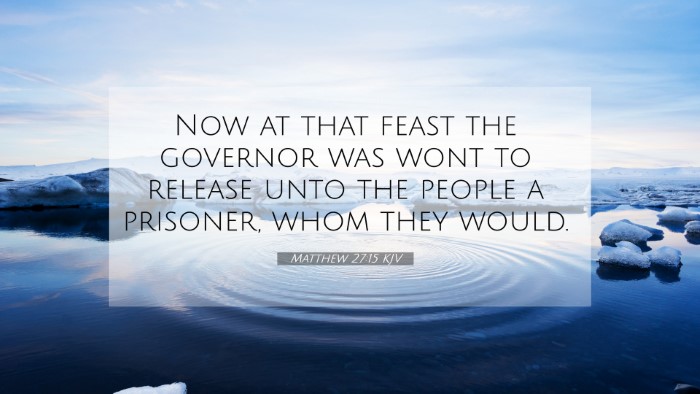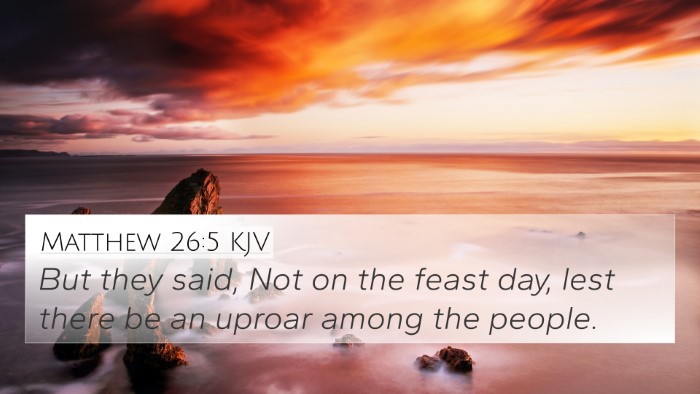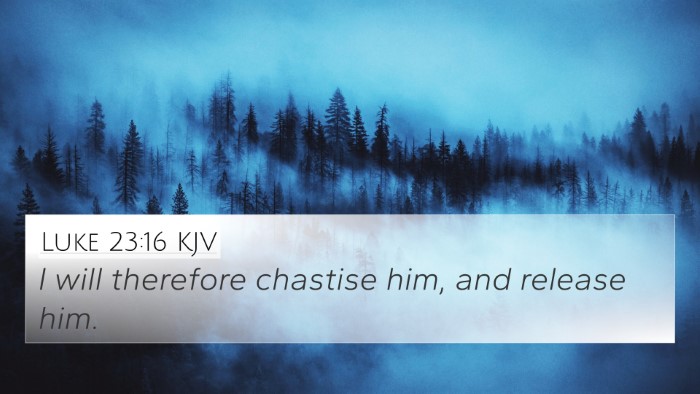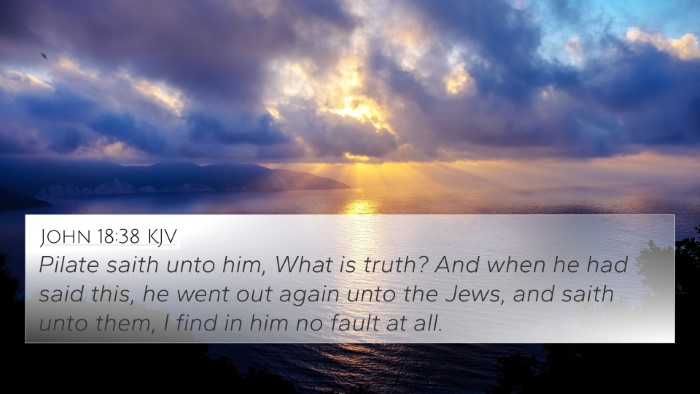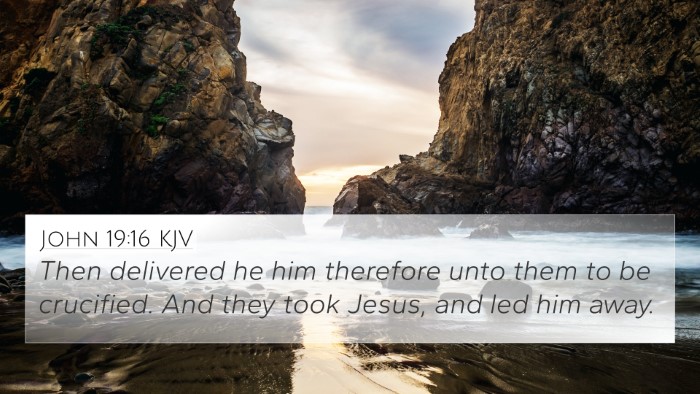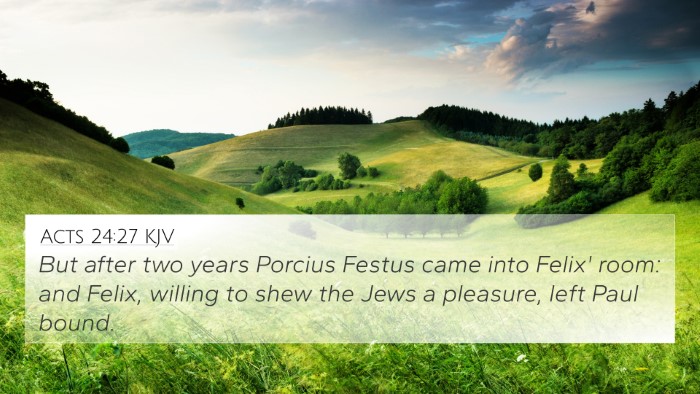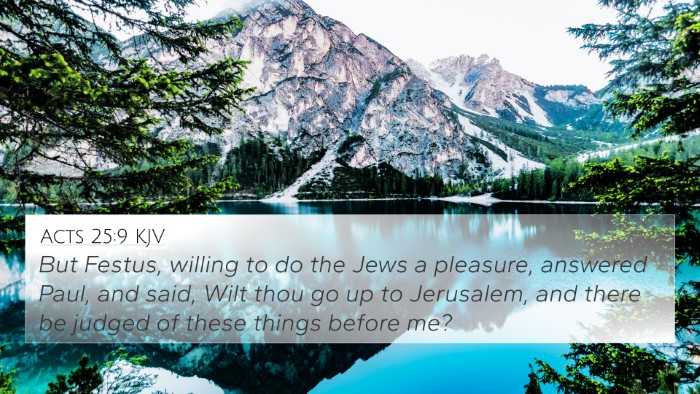Understanding Matthew 27:15
Verse Reference: Matthew 27:15 - "Now at that feast the governor was wont to release unto the people a prisoner, whom they would."
General Meaning
Matthew 27:15 is pivotal in the trial of Jesus, illustrating the custom of releasing a prisoner at Passover. This moment highlights the choice presented to the people between releasing Jesus or Barabbas, a notorious criminal. The implications of this choice resonate throughout the Gospels, underscoring themes of justice, guilt, and redemption.
Commentary Insights
Matthew Henry Commentary
Matthew Henry emphasizes the significance of the governor's practice of pardoning a prisoner during Passover. It reflects the tradition where the people were given a voice in the administration of justice. Henry comments on the moral and ethical implications of such a choice, illustrating the public's role in the justice system and how mob mentality can lead to dire consequences.
Albert Barnes Commentary
Albert Barnes provides insight into the historical and cultural context of this verse, explaining the role of Pontius Pilate and the Roman governance system. He notes that the choice given to the crowd illustrates their rejection of Jesus in favor of Barabbas, signifying their preference for a criminal over the innocent. This choice is seen as a reflection of the spiritual blindness and the sinful nature of humanity.
Adam Clarke Commentary
Adam Clarke elaborates on the legal proceedings and social customs of the time, stressing the significance of the feast and the people's authority to choose. Clarke points to the fulfillment of prophecy in Jesus' rejection and looks forward to the resurrection that follows, drawing attention to the juxtaposition of earthly justice and divine purpose.
Related Bible Cross-References
- Mark 15:6-15: Another account of the crowd choosing to release Barabbas over Jesus, reinforcing the theme of public choice.
- John 18:39: Similar mention of the Passover custom, highlighting the Roman practice in the context of Jesus’ trial.
- Luke 23:17: A parallel account noting the custom of releasing one prisoner at Passover.
- Matthew 1:21: The purpose of Jesus' coming to save His people from their sins, foreshadowed in this moment.
- Isaiah 53:3: Prophetic reference to Jesus being despised and rejected, which comes to fruition in this choice made by the people.
- Acts 3:14: Peter calls out the rejection of Jesus, affirming the consequences of choosing Barabbas.
- 1 Peter 2:24: Discusses Jesus bearing our sins, connecting to the impact of the decision made at the trial.
- Romans 6:23: The concept of sin and its consequences, which is poignantly depicted in the choice of Barabbas over Jesus.
- Revelation 5:6: A portrayal of Christ as the Lamb who was slain, contrasting with the crowd's decision.
- Luke 23:21: Further emphasis on the clamoring of the crowd to release Barabbas, enriching the narrative of rejection.
Thematic Connections
This verse, and its surrounding narrative, forms a crucial part of the inter-Biblical dialogue between the Old and New Testaments. The themes of freedom, choice, and culpability resonate throughout scriptures, making this moment not just historical but deeply theological.
Resources for Cross-Referencing
To explore the connections and in-depth analyses of this verse, various tools and resources can be used:
- Bible concordances to locate similar themes across texts.
- Bible cross-reference guides for deeper study.
- Comprehensive Bible cross-reference materials to trace thematic strands.
- Techniques for linking Bible scriptures to identify interconnections.
Conclusion
Matthew 27:15 serves as a significant crossroads in the story of Jesus' life, death, and resurrection. By understanding this verse through the lens of various commentaries and cross-references, one can appreciate the fuller narrative and theological implications of this moment. The connections drawn from this verse form a web of scriptural references that deepen our understanding of the Bible's message.
